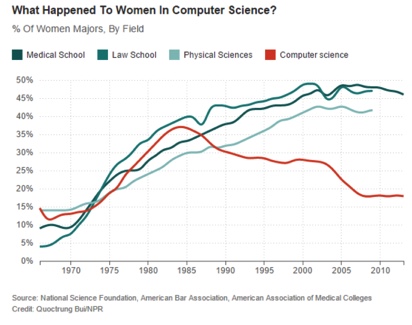###Latania Sweeney about aggregating health data
It’s become clear that these protections fall short of what is needed
to provide protection, especially because health data is often
generated outside of the contexts where these acts apply, and because
sensitive medical conditions can be inferred from non-medical data, like consumer habits.
According to research by Latanya Sweeney, anonymized medical records
can be re-identified by triangulating patient information with other
data, newspaper events describing patient names and incidents that
resulted in a particular medical injury.
She also discovered that “87% (216 million of 248 million) of the
population in the United States had reported characteristics that likely
made them unique based only on 5 digit ZIP, gender, date of birth.”
which means that their anonymized medical records can be matched with
other databases to re-identify them.
In such a context it is worth thinking twice before aggregating
public heath data, because under the apparent utility and research
necessity, hidden agendas can easily nest .
Therefore Latania Sweeney directly asks: Given the diversity of data
that can be useful in a health and medical context, is the construct of
“health data” helpful? If so, for what purposes and how should this
concept be constructed?
What are the appropriate avenues for addressing potential risks to
individuals in non-medical contexts stemming from the availability of
their health data?
###Antoinette Rouvroy calls for “recalcitrance”
I have been trying to encompass the scope of the current trend in
self quantification that translates through an important rise of new
mobile sensing gears, heavy corporate communication, and DIY self
organised movement, as it slips quickly towards the idea of a possible
e-health raising many questions around identity privacy and the public
sphere.
I feel that this self quantification movement needs to be firstly
addressed as an online social trend from a critical feminist approach.
It is indeed a new representational form of bodies, that tends to the
idea of an individualized and normalized persona reached through the use
of intrusive technologies, how do they relate to our previous
digibodies (Flanagan 2003)?
I understand this use of sensors as a form of body mapping strongly
binded to a social structure enforced by corporate and technological
powers that quickly accelerate its implementation as a playful and I
will make mine the apparatus of Antoinette Rouvroy when she calls for
“recalcitrance” Antoinette Rouvroy: ” les systèmes de contrôle de la
gouvernance libérale” “banalité sécuritaire” “qu’à condition de disposer
de quantités massives de données (à caractère personnel ou non)
relatives aux individus et de pouvoir appliquer sur ces quantités
massives de données des algorithmes de calcul statistique qui permettent
d’établir «automatiquement », des corrélations significatives entre ces
données recueillies dans des contextes hétérogènes les uns aux autres,
il devient possible de TOUT prédire” “En appeler à la récalcitrance,
c’est, ici, rappeler l’irréductibilité des personnes aux réseaux de
données digitalisées à travers lesquels le pouvoir (quel qu’il soit,
public, ou privé) https://dipot.ulb.ac.be/dspace/bitstream/2013/91497/1/MULT_040_0088.pdf
From experimental playful stages to real life data collection
I thought you might like the irony of the timeline, from experiential
situationist through to actual real life social experimentation by data
collection.
Same issue happens with body data that has started as a
playful endeavor a gaming environment at the city scale, and that now
finds new effectiveness through web 2.0 social network.



